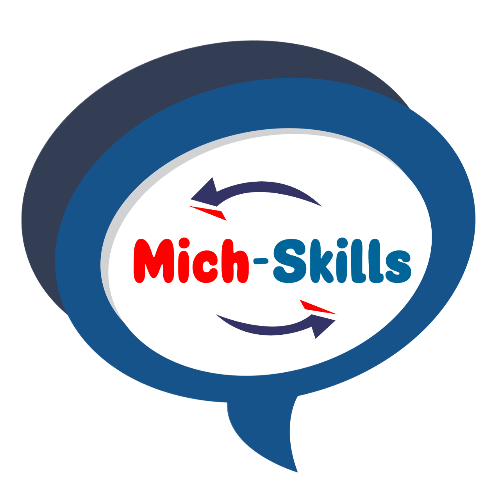Information Sheet 1.2-4
Information Sheet 1.2-4: Summarizing Notes, Messages, and Articles

A summary is a shorter version of an original text that outlines the main points in a specific structure. The length of your summary usually depends on the length of the original text. Longer articles or proposals may require longer summaries to address all the ideas, while short texts may have only one paragraph.
Practice English Writing
Writing a summary is hard because it requires two thinking skills.
The first is finding the main idea. The second is organizing information so that the main idea is explained with reasons and details while ignoring the unimportant parts. This intermediate+ level lesson show ESL students how to write a summary using a four-step process called FACT.
Part 1. What is a Summary?
A summary has several important features:
- it’s short
- talks about the main idea
- provides important information (e.g. examples) that make the main idea easy to understand
- excludes unnecessary information
- uses your own words, though some key words from the original story are okay
One final point.
A summary is not just a bunch of sentences put together in a paragraph. It should be well written with a beginning, middle and end. A well written summary is a story about a story.
Why learn to summarize?
Summary writing helps students develop skills that can be used in school and at work:
- Evaluate: separate the important from unimportant
- Organize: create text with a logical order (it’s like a puzzle)
- Vocabulary: expand word knowledge
- Clarity: write clear text focused on one idea
Part 2. FACT
Use these four steps to write a summary.
Step 1. Focus
Describe the main idea in a sentence or two. Be specific.
How can you find the main idea? Ask questions, like these:
- What is the story’s purpose?
- What is the message?
- What is the thesis?
- What are the reasons?
You may want to use sentence patterns like these:
- It’s a story about ….
- The story investigates what happens when ….
Step 2. Analyze
Take the main idea and divide it into small parts. For each part, write two or three sentences. Imagine these parts are like the ingredients in a recipe.
When writing a summary of a story (text or video), ask yourself these questions:
- What happens?
- Who are the characters?
- What is the setting?
- Is there conflict or tension?
- What is the cause and the effect?
The summary should include enough information to answer basic questions, like who what, where, when, why and how.
However, the summary should not include all of the details. Seeing what’s important, and what’s not, is a skill that can be learned over time with practice.
Step 3. Conclude
It’s one or two sentences that describe the ending.
Step 4. Tighten
Tight writing means you edit your text to remove unnecessary words or details. The summary should focus on describing the main idea.
Short articles and sentences
Reading is the best way to improve your vocabulary! The context of articles, stories, and conversations helps you figure out and understand the meaning of English words in the text that are new to you. Reading also provides repetition of vocabulary words you have already learned to help you remember them.
English Reading
In today’s world, reading is basic to everyday life. As children we learn to read, and as adults, we read to learn. We read to learn about the news, to learn about rules, and to learn about how to do things. We also use reading to learn English.

If you want to learn English more quickly, lots of reading is important. The more you read, the more input your brain gets about how the language works. When you read in English, you can improve your vocabulary, your grammar, and your writing skills at the same time.
Reading to Learn English Vocabulary
Reading is the best way to improve your vocabulary! The context of articles, stories, and conversations helps you figure out and understand the meaning of English words in the text that are new to you. Reading also provides repetition of vocabulary words you have already learned to help you remember them.
Reading comprehension is easier if you already know the keywords in the reading. This is one reason that new vocabulary is presented and practiced at the beginning of each USA Learns unit. You learn the meaning and practice the pronunciation of the most important words that you will later read in video scripts and reading lessons.
Reading to Learn English in the 1st English Course
We say a picture is worth a thousand words. Pictures are an important aid to comprehension for students who are just beginning to learn English. In the 1st English Course reading activities, the sentences are short with some key vocabulary. The picture helps you with comprehension and to learn English words that might be new.
Example:
Read Calix Jacob’s Story. Do the activities after the reading the story?
Calix Jacob is a construction worker.
One day at work, he drops a block on his foot. He can’t move his foot. He thinks its broken. His friend calls 911. An ambulance takes him to a hospital.

Did you understand what you read? Check your understanding of main ideas and details in the comprehension activities. But, be careful! The answers are not always the exact words from the reading text. Reading comprehension requires vocabulary knowledge, background knowledge, and thinking skills.
Write down some vocabulary words that is new to you.
- __________________________
- __________________________
- __________________________
- __________________________
- __________________________
Answer the following questions?
- What is the name of the construction worker?
- What happen to his foot?
- Why did they bring him to the hospital?
References:
https://www.eslwriting.org/learn-english-summary-writing/
https://www.usalearns.org/reading-to-learn-english#:~:text=Reading%20is%20the%20best%20way,to%20help%20you%20remember%20them
